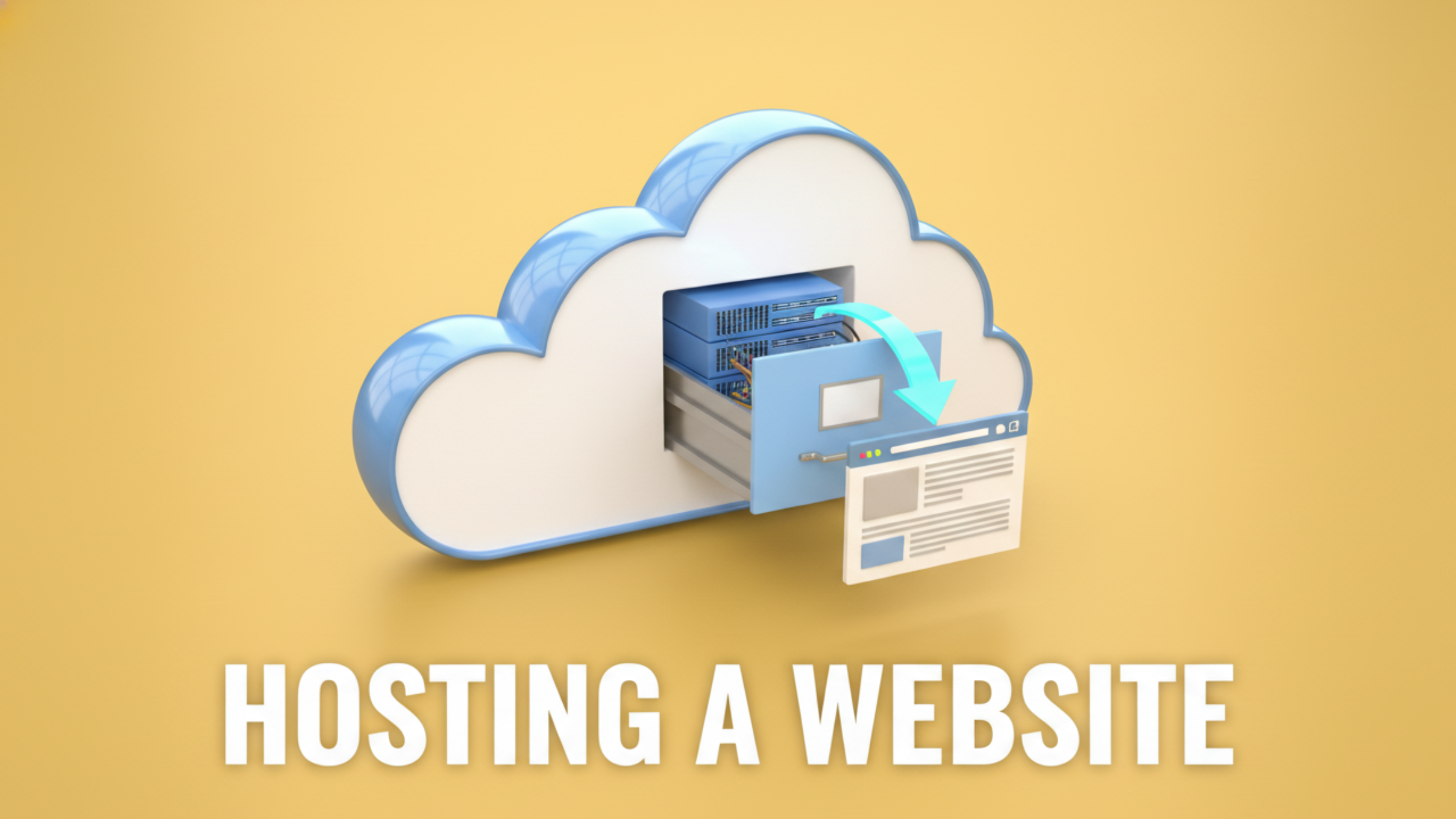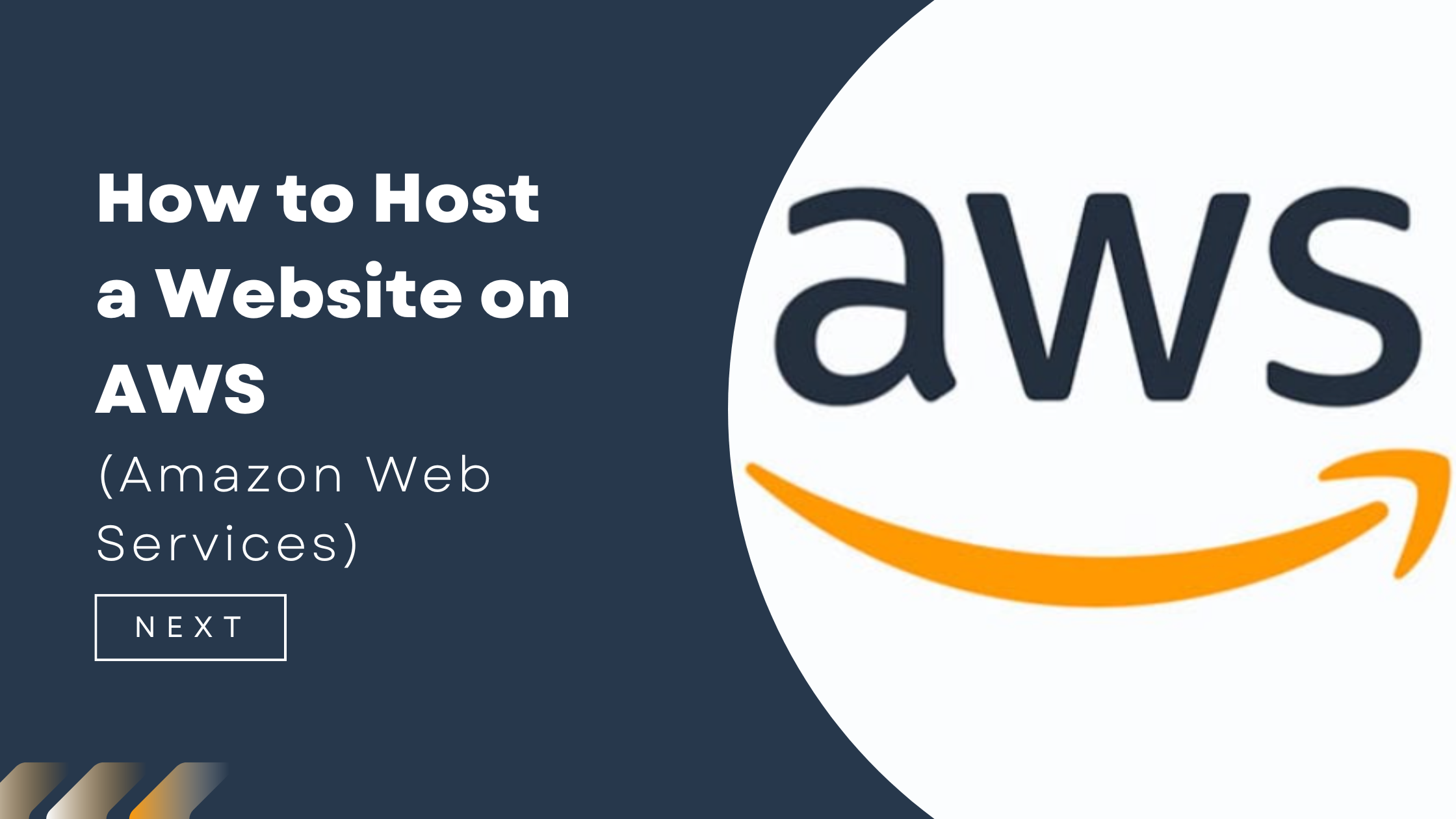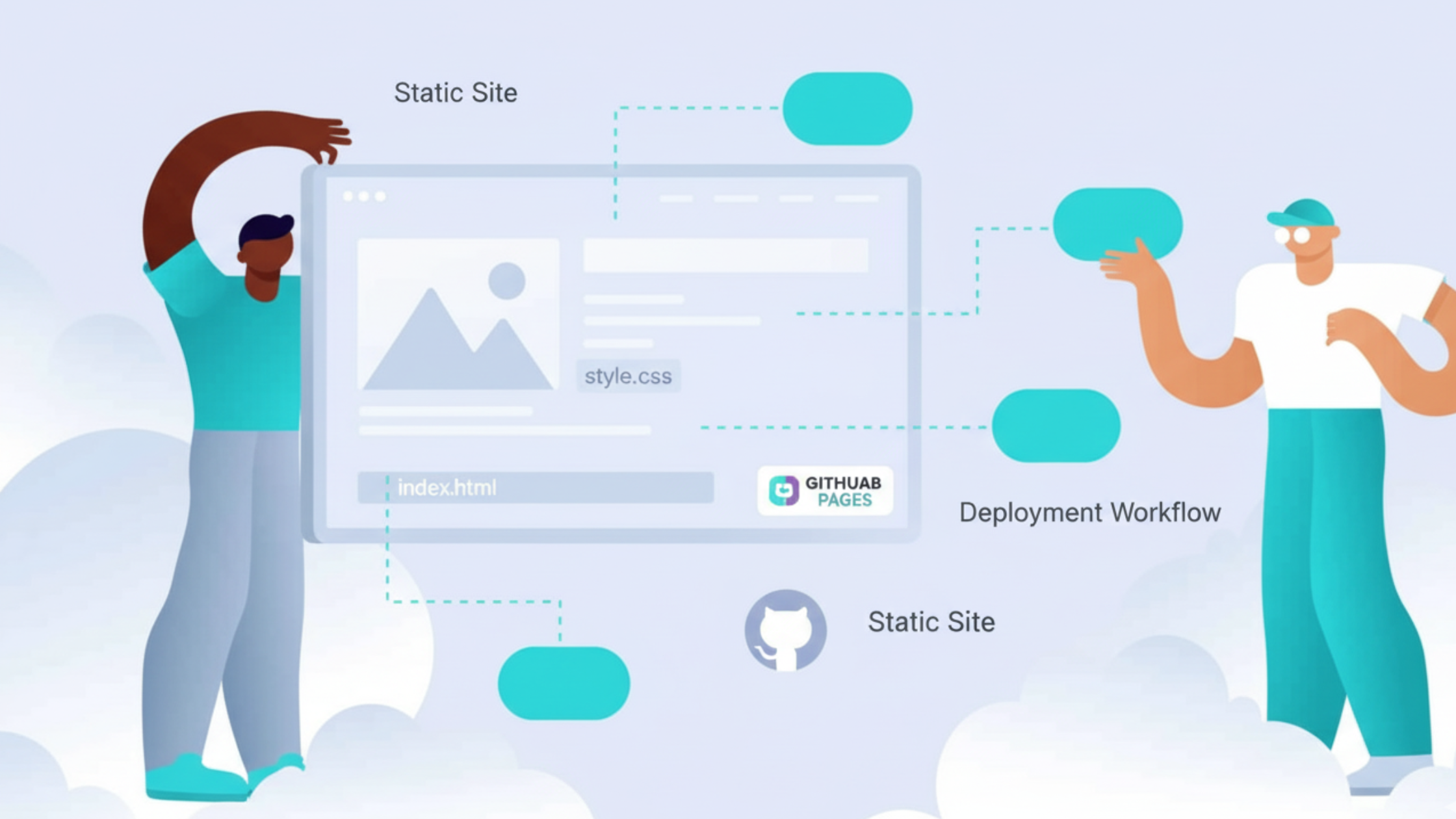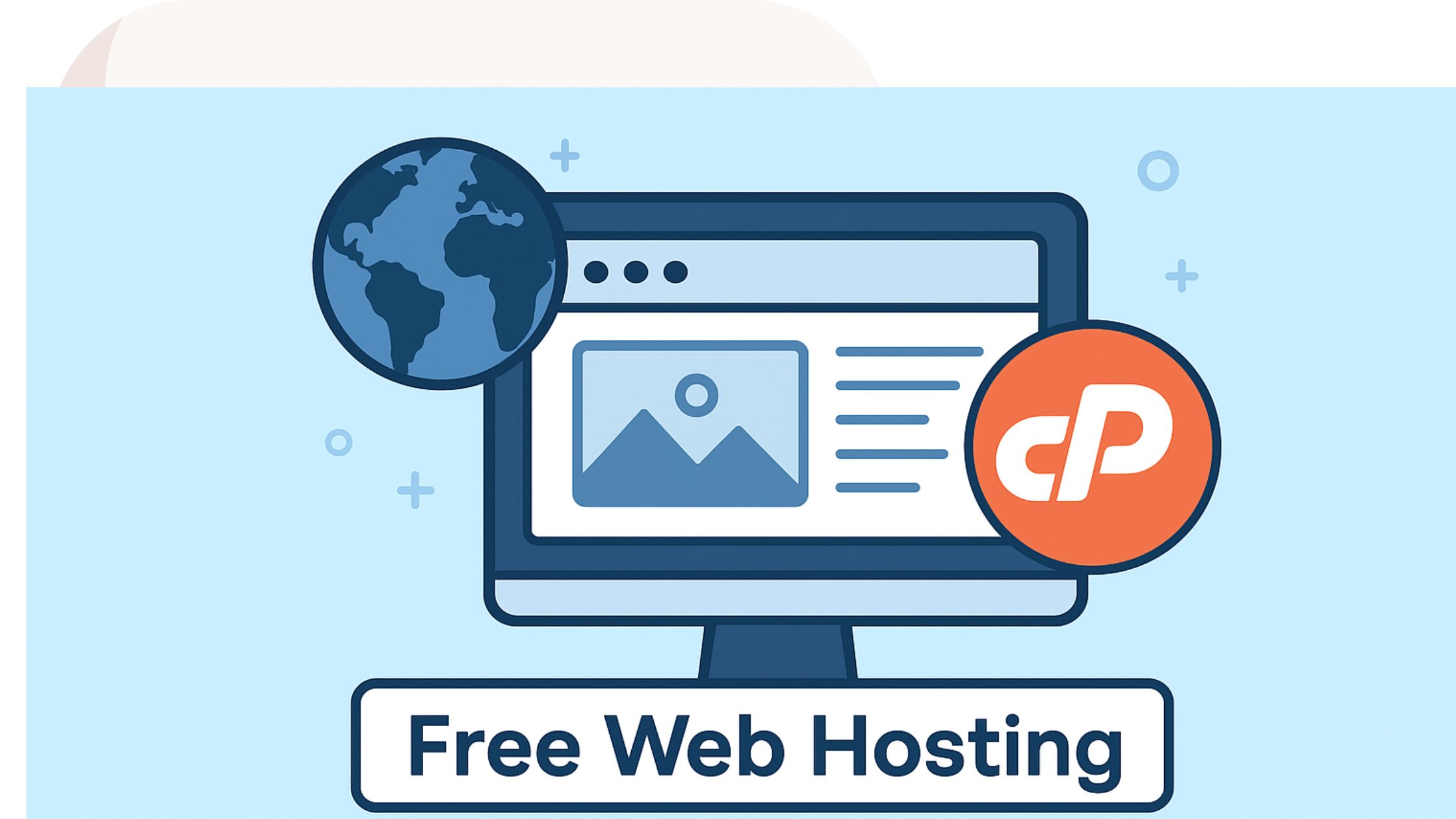Have you ever tried starting a website but got stuck on what comes after picking a name and designing a few pages?
You are not alone.
This got to do with something called web hosting.
If you want your online presence to be fast and reliable, the right web hosting matters. This article will help you understand what web hosting is, why it’s important, and how it works behind the scenes.
What is Web Hosting?
Web hosting is a service that allows individuals, businesses, and organizations to publish their websites or web applications on the internet by storing their site’s files (such as HTML, CSS, images, and databases) on specialized computers called servers.
Without it, no one can find your site or see your content.
These servers are maintained by web hosting providers such as Truehost, Bluehost, Namecheap, and Olitt, who ensure that the sites remain accessible online 24/7.
These companies also manage server security, allocate bandwidth, and offer storage space depending on the hosting plan.
When a user types a domain name (like olitt.com ) into their browser, the hosting server delivers the requested files, making the website visible to the visitor.
Now, web hosting comes in different forms:
- Shared hosting
- VPS (Virtual Private Server)
- Dedicated hosting
- Cloud hosting
Each of these offer varying levels of control, performance, and price, and thus cater to different needs from personal blogs to large-scale enterprise platforms.
How Web Hosting Works
If you plan to run a website, it’s important to know how web hosting works. Your files need to be stored somewhere reliable, not just on your computer.
Every website uses a mix of hardware, software, and special services called web hosting to stay online.
Understanding what happens in the background helps you make better decisions for your website.
Servers and Website Files
A server is a powerful computer, always on and connected to the internet. It’s designed to store website files like images, texts, videos, databases, and scripts.
These files make up your site’s content, design, and features.
Here’s how web hosting handles your files:
- All files are saved and organized on a web server.
- The server makes sure your site is available all the time by responding to requests from visitors’ browsers.
- When someone visits your website, their browser sends a request to the server, which then sends the right files back to the browser.
Some servers are shared, meaning many websites use the same computer.
Others are dedicated, meaning only your site uses that server. This affects speed, privacy, and performance.
Domain Names and DNS
If you want people to find your website, you need a domain name.
This is your website’s web address (for example, www.example.com ). Without a domain name, visitors would have to type in a string of numbers, called an IP address, to find your site.
Here’s how the process works:
- You choose and register a domain name through companies called registrars.
- The Domain Name System (DNS) connects your domain name to the right server.
- When a visitor enters your domain, DNS finds the matching IP address for your server.
DNS acts like an internet phone book. It helps browsers know where your website’s files live so they can load your site quickly.
Bandwidth, RAM, CPU, and Disk Space
Your hosting plan decides how well your site handles visitors and data. The following resources are the most important:
- Bandwidth: This controls how much data moves between the server and users.
Higher bandwidth lets more visitors view your site at the same time. - RAM (Random Access Memory): RAM helps the server run website scripts and applications smoothly.
Not enough RAM can make your site slow. - CPU (Central Processing Unit): The CPU does all the calculations and work needed to deliver your site’s pages.
A stronger CPU means faster response times. - Disk Space: This is the storage for your website files, images, videos, and databases.
If you run out, you can’t upload more files.
The right balance of these resources means your site will load fast and stay online.
Advanced web hosting plans offer more power for larger or busier sites.
Types of Web Hosting Services
Picking the right web hosting plan is one of the core steps to get your website online.
The kind you choose impacts your site’s cost, speed, security, and how easy it is to manage.
Some hosting services share resources with others, while some keep everything private to your site alone.
You will see each type of website hosting fits different needs and budgets. Understanding these differences helps you avoid overpaying or struggling with slow performance.
a) Shared Web Hosting
Shared hosting is the entry point for most people starting a website. It puts your website on a server with many other sites.
All customers share the same hardware, including:
- CPU (processor)
- Memory (RAM)
- Storage
This setup keeps costs low, so it’s often the cheapest hosting plan. Shared web hosting providers handle server updates and security, so you don’t need any technical knowledge.
Benefits of Shared Hosting:
- Very low cost for small sites or blogs
- Easy to use, with tools like control panels to manage your site
- No server maintenance required
Drawbacks:
- Resources are split among many users, so your site may slow down if others on your server get busy
- Less control than higher-priced plans
- Not suited for large traffic
Best for: Personal websites, blogs, small businesses, and anyone looking for an affordable and simple website hosting.
Shared web hosting is a good choice if you want to try out a new site or don’t plan on getting many visitors at first.
b) Virtual Private Server (VPS) Hosting
Virtual Private Server (VPS) hosting provides more resources and control than shared hosting.
Instead of sharing everything, the server is divided into several small virtual servers.
Each user gets their own dedicated slice of the server.
Key Features of VPS Hosting:
- More memory and processing power than shared hosting
- Your site’s speed and performance is not affected by neighbors on the server
- Greater control, including the ability to install custom software
Advantages:
- Scalable: Easily add more space, memory, or CPU as needed
- Root access for advanced users, letting you change server settings
- Better security because sites are kept separate
Possible Downsides:
- Costs more than shared hosting but less than a dedicated server
- Some technical knowledge is helpful, especially for self-managed VPS
Best for: Growing businesses, e-commerce shops, and users who want more customization and control.
VPS hosting is also suitable for sites with moderate-to-high traffic that have outgrown shared hosting.
A VPS gives you many benefits of dedicated hosting without paying high prices. You get increased flexibility without managing your own server hardware. If you want your site to load faster and support more visitors, VPS hosting is a strong step up from shared options.
Key Features and Tools of Web Hosting
When choosing web hosting, you need practical features that help you manage your site easily and keep it secure.
A good web host gives you tools to set up your website, create backups, and manage email accounts.
You’ll find tools for uploading site files and handling databases. Many hosts also make website creation less stressful by offering built-in tools and support.
Access to these features can save you time, boost security, and make your daily management tasks simple.
I) Control Panels and Website Builders
Control panels are your main dashboard. The most popular is cPanel, but some hosts offer custom or less-known options.
These control panels let you handle the core parts of your hosting:
- Add or remove domains
- View and manage site files using FTP
- Set up email accounts and security features
- Monitor website traffic
Website builders are included with many web hosts and help you launch a new site without needing to know code.
They offer drag-and-drop tools, templates, and built-in support for content management systems like WordPress.
This makes building a website as easy as selecting a theme and adding your text or images.
Here’s a quick comparison table:
| Feature | Control Panel | Website Builder |
| Domain Management | ✔️ | ❌ |
| File Access (FTP) | ✔️ | ❌ |
| Drag-and-Drop Site Creation | ❌ | ✔️ |
| Backup & Restore | ✔️ | ✔️ (limited) |
Most website builders let you preview changes live, which helps you avoid mistakes before publishing.
II) Email Accounts and MySQL Support
A web host usually lets you create personalized email accounts linked to your domain, such as info@yourdomain.com. This makes your site look more professional and credible.
Look for hosts with easy email management through your control panel. Essential features include:
- Spam filters
- Email forwarding
- Auto-responders
MySQL support is just as important. Many web applications, such as WordPress or forums, store information in MySQL databases.
With MySQL, you can:
- Run your blog or online store
- Store customer and order data securely
- Troubleshoot problems using built-in tools
Most hosts let you create, delete, and manage databases from the control panel. Some even offer tools to easily import or export MySQL databases.
III) Backups and Automated Backups
Keeping your website safe means having recent backups in case something goes wrong. Good hosts offer regular backups, often daily or weekly, to protect your site files and databases.
Automated backups are essential because they run on a set schedule without any extra work needed from you.
If your site is ever hacked or a file gets deleted by mistake, you can restore your site to a previous state quickly.
Key backup features:
- Daily, weekly, or manual backup options
- Easy restore process through your control panel
- Ability to download your backup files for extra safety
If you want reliable hosting for your site with easy management and strong backup tools, consider looking at Truehost’s hosting plans.
Choosing a Web Hosting Provider
When picking a web hosting provider, your choice shapes your website’s speed, security, and growth options.
The best service protects your online reputation and saves you time on technical issues.
Focus on what you need today and what you think you’ll need as your website grows.
Hosting plan features, company support, and real customer reviews all play a big role in how happy you’ll be in the long term.
Take a few minutes and look into all your options before making a final decision. Small details, like money-back guarantees or free site migration, can make your experience much smoother.
a) Assessing Hosting Needs and Plans
Start with your website’s purpose and daily demands.
A small blog uses far less space, memory, and bandwidth than a busy online shop.
If you expect heavy photos, videos, or growing visitor numbers, you’ll need a more powerful plan.
Here’s a quick comparison of popular hosting plan types:
| Hosting Plan | Use Case | Pros | Cons |
| Shared Hosting | Blogs, Small Sites | Cheap, Simple to use | Limited resources |
| VPS Hosting | Growing Businesses | More power, Flexible | Higher cost, Some setup |
| Dedicated Hosting | Large Companies | Maximum control, Fast | Expensive, Tech needed |
| Cloud Hosting | Scalability needed | Easy to grow, Reliable | Cost varies, Setup |
Check if the hosting provider offers easy upgrades. You may start small and later need more space or features. Some plans include money-back guarantees, free SSL, or even free daily backups.
Look for these extra options in your chosen hosting account.
b) Evaluating Performance, Scalability, and Support
Website speed matters. Fast hosting keeps visitors happy and helps your search ranking.
Check for strong uptime claims — aim for 99.9% as a minimum. Good web hosting companies invest in quality infrastructure.
Customer support can save your site in emergencies. Reliable hosting providers offer 24/7 technical support through live chat, ticket systems, or phone.
Reading customer reviews and online reviews gives you a clear idea of how support responds in real situations.
Truehost provides the best 24/7 customer support in Kenya.
Scalability means your hosting plan can grow with your business. Cloud hosting and VPS plans usually scale quickly. Make sure your provider allows easy upgrades if you expect more visitors or plan to add new services.
You shouldn’t have to worry about moving your website if traffic grows.
Look for these features:
- Free site migration
- Daily or weekly backups
- Strong firewall and security options
- Clear help guides and FAQs
Money-back guarantees add peace of mind, so check how long you have to change your mind after paying.
c) Comparing Popular Web Hosting Companies
Big web hosting companies such as Truehost, Namecheap, Bluehost, InMotion Hosting, Amazon Web Services, and Google Cloud all have different strengths.
Some focus on beginners, while others target experienced developers.
A quick feature snapshot:
- Truehost: Affordable plans, user-friendly dashboard, free migration
- Olitt: Low-cost domains, solid hosting, website builder, WordPress hosting
- Bluehost: Strong WordPress support, free domain for 1 year
- InMotion Hosting: Fast performance, strong tech support, free website transfers
- Amazon Web Services: Enterprise-grade cloud hosting, high scalability, used by large businesses
- Google Cloud: Modern infrastructure, strong reliability, scalable cloud features
For users in Kenya, localized support, payment methods, and data center location matter. If you’re looking for web hosting with strong customer service and competitive pricing, try Truehost’s web hosting plans.
These options give you access to reliable features, helpful support, and an easy upgrade path as your site grows.
Always compare important details like:
- Storage limits
- Bandwidth offers
- Customer support channels
- User reviews
Choose a web hosting service provider with the best mix of features for your needs and budget. This helps your project start off right and stay smooth as you grow.
Security, Maintenance, and Best Practices
Managing your web hosting is about more than getting your website online.
You must pay close attention to security, routine maintenance, and how your site performs under different amounts of traffic.
These areas are critical for keeping your site fast, safe, and running smoothly.
Staying alert to security risks, performing regular upkeep, and knowing how to handle growth keep your website ready for visitors.
If you run an online business or store, following the right practices means you protect your site, your data, and your reputation.
Using a trusted host can make many of these steps much easier.
Web Hosting Security Fundamentals
Your website faces real risks from hackers, viruses, and scams. Strong web hosting security helps protect your data, your visitors, and your brand.
Key practices you need to follow include:
- Use strong passwords for all logins—change them often.
- Choose a hosting provider that offers firewalls, SSL certificates, and malware scanning.
- Keep all software, such as WordPress, plugins, and PHP, up to date. Outdated software creates security holes.
Most business sites store sensitive customer information, so a security breach can cause severe problems. Regularly backing up your data is essential. Restore points let you recover your site after any attack or accidental changes.
Choose a hosting provider that operates secure data centers. These centers have physical security, power backups, and advanced monitoring tools.
Managed hosting services often handle updates, security patches, and scanning for you. If you pick free hosting, you likely get fewer security features — sometimes none at all, unless a limited trial one offered by reputable companies like Truehost.
Ongoing Maintenance and Troubleshooting
Web hosting needs regular care. Your site relies on a healthy server configuration, updated apps, and efficient databases.
Check for software updates every week. Update content management systems, plugins, themes, and scripts like PHP to fix security flaws and maintain peak performance.
Monitor your server’s health using built-in tools. Many hosts provide dashboards with real-time information about traffic, space, CPU, and memory use.
Address warnings and errors quickly.
- Set up automatic backups to prevent data loss.
- Track your storage and bandwidth before problems arise.
- Use customer support for troubleshooting when issues are outside your skills.
If you run into errors or downtime, look for clear error codes or log files. These can help pinpoint the problem, whether it’s a failed update, a bad setting, or a plugin crash.
Routine maintenance lowers the risk of unexpected outages and lets you focus on your online business or personal projects.
Optimizing Site Performance and Handling Traffic
Faster sites keep visitors happy and boost your rankings. You need to optimize both your software and your hosting setup.
Compress images and use modern file formats. Enable browser caching so users don’t reload large files each visit. If your host allows, activate a content delivery network (CDN) to serve files faster across different locations.
Upgrading your plan can help handle spikes in website traffic. Hosts often offer scalable solutions, so resources grow with your needs.
Here’s a quick table to show how common actions impact performance:
| Action | Benefit |
| Image Compression | Faster page loads |
| Caching | Less server strain |
| CDN | Better speed for global visitors |
| Code Optimization | Efficient resource use |
| Scalable Hosting | Reliable during high-traffic periods |
If you run an online store, look for managed hosting or specialized e-commerce plans. These often come with advanced caching, daily backups, and better support.
Keeping your site fast and reliable makes it easy for visitors to browse, shop, or get the information they need.
By combining careful maintenance, proper security steps, and performance tweaks, you meet the core web hosting security practices that protect your website and support your business online.
 Domain SearchInstantly check and register your preferred domain name
Domain SearchInstantly check and register your preferred domain name Web Hosting
Web Hosting cPanel HostingHosting powered by cPanel (Most user friendly)
cPanel HostingHosting powered by cPanel (Most user friendly) KE Domains
KE Domains Reseller HostingStart your own hosting business without tech hustles
Reseller HostingStart your own hosting business without tech hustles Windows HostingOptimized for Windows-based applications and sites.
Windows HostingOptimized for Windows-based applications and sites. Free Domain
Free Domain Affiliate ProgramEarn commissions by referring customers to our platforms
Affiliate ProgramEarn commissions by referring customers to our platforms Free HostingTest our SSD Hosting for free, for life (1GB storage)
Free HostingTest our SSD Hosting for free, for life (1GB storage) Domain TransferMove your domain to us with zero downtime and full control
Domain TransferMove your domain to us with zero downtime and full control All DomainsBrowse and register domain extensions from around the world
All DomainsBrowse and register domain extensions from around the world .Com Domain
.Com Domain WhoisLook up domain ownership, expiry dates, and registrar information
WhoisLook up domain ownership, expiry dates, and registrar information VPS Hosting
VPS Hosting Managed VPSNon techy? Opt for fully managed VPS server
Managed VPSNon techy? Opt for fully managed VPS server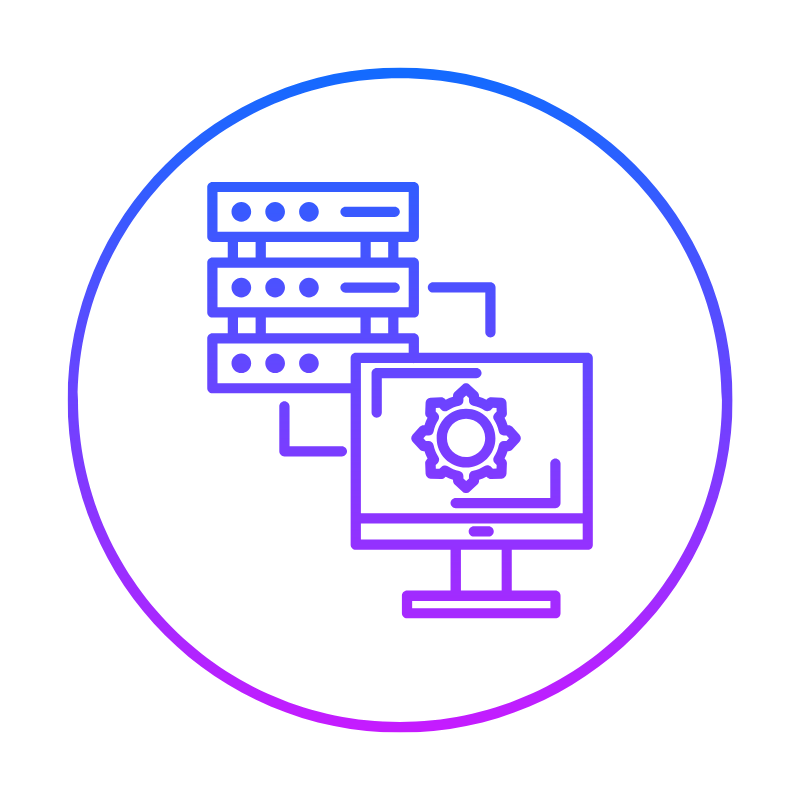 Dedicated ServersEnjoy unmatched power and control with your own physical server.
Dedicated ServersEnjoy unmatched power and control with your own physical server. SupportOur support guides cover everything you need to know about our services
SupportOur support guides cover everything you need to know about our services


